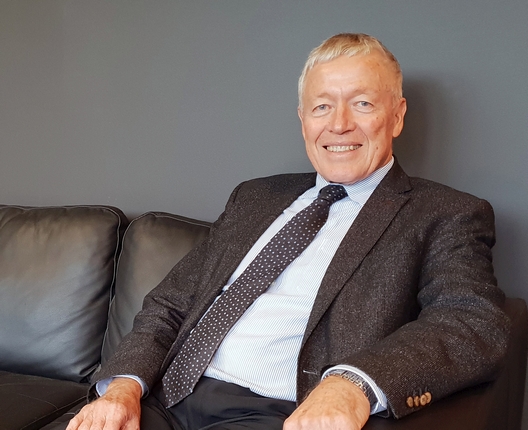News
Published 28 June 2018On reflection | No te hurihuringa

Emeritus Professor Richard Bedford QSO FRSNZ reflects on his past three years as President of Royal Society Te Apārangi, with his term ending on 30 June.
"When I was elected to the Council of Royal Society Te Apārangi in 2013 I discovered I knew little about the range of activities the Society was engaged in. As a Fellow I knew something about the work of the Academy, and as a long-standing member of one of the Society’s Constituent Organisations (the New Zealand Geographical Society) I was aware of the programmes for teachers and the support that was provided for New Zealand’s involvement in the International Unions representing the sciences, social sciences and the humanities. As a former member of the Marsden Fund Council, I knew about the Society’s role in managing the Marsden Fund. But, as I quickly discovered, there was a great deal I did not know.
When I reflect on my five years as a member of Council, including the opportunity of serving as President for the past three years, I am humbled by the reach, range and quality of the Society’s activities and relationships – something which I think may surprise some people. New Zealand’s national academy is unusual internationally because of its inclusion of all the major areas of intellectual endeavour – the physical sciences, the life sciences (including medicine), the social sciences, philosophy, mathematics and computing, engineering, technology and the humanities. Most national academies overseas span just one of these domains – Australia, for example, has five national academies, and the UK has numerous subject-related societies.
It has been a real privilege to work with a very talented and dedicated group of Council members and Society staff. When I joined the Council one of the key items on Sir David Skegg’s agenda, as President, was raising the profile of the Society’s independent expert advice function. A very productive engagement with the Prime Minister’s Chief Science Adviser, Sir Peter Gluckman, and his team of Departmental Science Advisers, has evolved and the Society is well-positioned as an essential part of New Zealand’s research advice ecosystem. This is not necessarily a new development – as John Martin’s excellent history shows, expert advice provided by the Society has made major contributions to public and political debate in the past. In recent years I think we have seen a resurgence of this contribution, as well as in the respect the Society has earned as an independent source of excellent, evidence-based commentary.
A distinctive feature of Royal Society Te Apārangi is its 10 Branches. I am not aware of any comparable national academies overseas that have branches in different parts of the country. The Branches contribute powerfully to the Society’s public engagement and a special position is reserved on Council for a representative. Their current representative, Emeritus Professor Ken Strongman, is an active champion of the distinctive contribution they make to our primary function. As President I have enjoyed my engagement with the Branches enormously; they played a very important role in the Society’s 150th anniversary celebrations.
Our 150th anniversary has provided an opportunity for reflection, reassessment and renewal. As I complete my term as President, I want to express my appreciation to the Society’s staff for the leadership they have shown in driving a significant agenda for change. My term as President has overlapped with Dr Andrew Cleland’s first three years as Chief Executive and he has demonstrated a strong commitment to making the Society as relevant as possible for New Zealand’s 21st century research environment.
In a research environment where change, rather than the status quo, is the order of the day, I want to acknowledge the very constructive, robust debates we have had on Council about how to address a range of distinctive as well as general challenges that are facing national academies. A distinctive one in New Zealand is ensuring the national academy has relevance for our Māori research community and, through this, delivers on our obligations under the Treaty of Waitangi. The Council has been unanimous in its support for the moves we have been taking in this direction.
Accommodating diversity amongst researchers and their ways of knowing the world is an essential prerequisite for a successful national academy. As we navigate our 151st year, which also happens to be the 125th anniversary of women’s suffrage in New Zealand, we are continuously affirming our commitment to becoming an academy that better represents our 21st century research community. In this regard, we are seeking to be recognised as the eye of the needle that features prominently in a famous whakataukī that is attributed by some to the first Māori king, Pōtatau te Wherowhero:
Kotahi te kōwhao o te ngira e kuhuna ai to miro mā, te miro pango, te miro whero.
I muri, kia mau ki te aroha, ki te ture, me te whakapono.
Through the eye of the needle pass the white threads, the black threads, and the red threads.
Afterwards, looking to the past as you progress, hold firmly to your love, the law and your beliefs.
The process of acknowledging inclusive ways of understanding phenomena and relationships makes for a much stronger knowledge base. It also gives space for much richer stories and more innovative ways of addressing challenges. This is the essence of our mission to enable everyone to discover, explore and share knowledge."
Emeritus Professor Richard Bedford QSO FRSNZ
Royal Society Te Apārangi President 2015–2018
